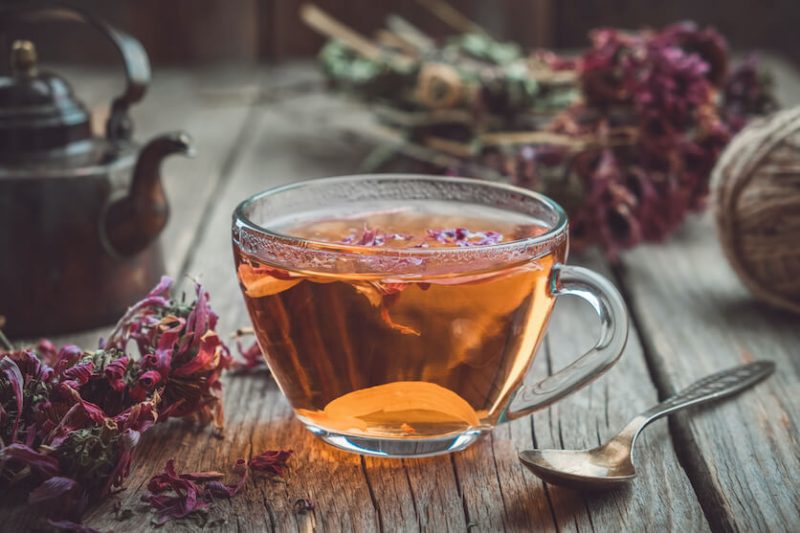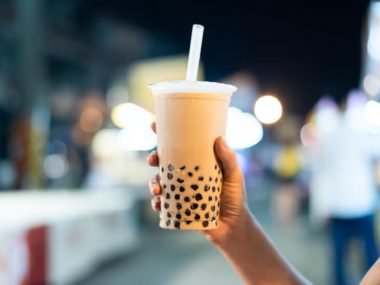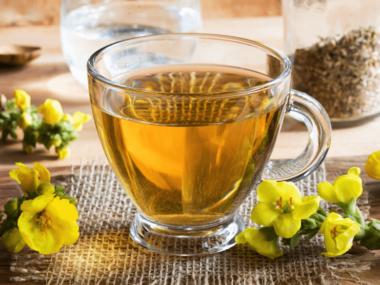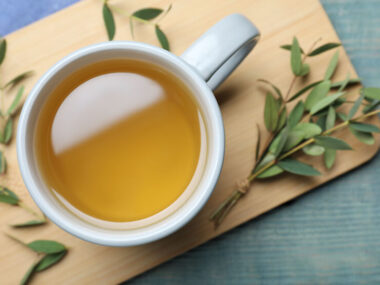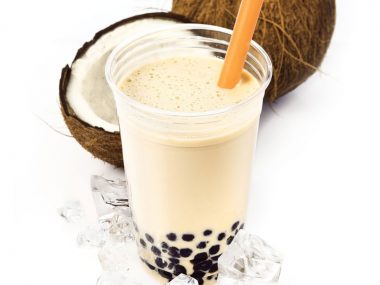As cold and flu season ascends upon us, you’ll find all forms of Echinacea and other herbal remedies being thrown into shopping carts by many. But just how much do we know about this familiar herb? What you find out about echinacea tea may surprise you!
Table of Contents
What Is Echinacea?
Echinacea is a flowering herbaceous plant genus belonging to the Asteraceae family (which includes sunflowers.) There are numerous species of Echinacea. However, Echinacea purpurea is the most commonly used species used for herbal remedies. This purple petal, orange-cone plant is grown throughout the U.S., Canada, and Europe.
History Of Echinacea
Echinacea’s first official mention was recorded in “Flora Virginica” in 1762 (a publication of recorded flora by contributing plant observer/collector John Clayton.) The herbal use of Echinacea made its appearance in the National Formulary of the U.S. back in 1913.
The National Library of Medicine published an article on Echinacea’s historical background (“History of a plant: the example of Echinacea“) which mentions the debut of the first Echinacea preparation back in the 1880s. “Meyer’s Blood Purifier” hit the market and was claimed to treat rheumatism, neuralgia, and rattlesnake bite. This syrup wonderdrug was developed and patented by Dr. H.C.F. Meyer from Pawnee, Nebraska.
Dr. Meyer stood behind his product so intently that he allowed himself to be bit by a rattlesnake in front of an audience. He proceeded to treat his snakebite with his syrup. After a fellow doctor tried the syrup, he claimed it was the best, and the syrup took off in sales. However, by 1910, Echinacea was dubbed as quackery by the American Medical Association.
Sometime around 1930, Echinacea began to pick up momentum in use by Germans. Cultivation of the herbal plant became a widespread medicinal crop in Germany. Although Echinacea failed to thrive as an herb here in the U.S. from 1930 on, by the 1980s, Americans began to rely on it again.
Today, this herb is sold all over the world and managed to rank as the third most popular and profitable herbal supplement. In 2015, sales of this herb raked in $60.1 million (USD.) Echinacea is sold in many forms, from supplements to tinctures, syrups, teas, powders, to lotions, creams, ointments, and salves.
Numerous species of this plant were used by indigenous tribes here in the U.S. throughout history to treat colds, dental problems, throat conditions, seizures, cancer, abdominal pain, wounds, and snakebite. Healers of North American tribes (Cheyenne, Choctaw, Dakota, Delaware, Fox Kiowa, Montana, Omaha, Pawnee, Poncho, Sioux, and Winnebago) used Echinacea to relieve pain, treat inflamed skin disorders, treat wounds, as a poison antidote, treat colds, infectious diseases, and more.
Echinacea has become one of the top cultivated plants here in the U.S. The American Botanical Council lists Echinacea plants as one of the top 10 in sales during 2018.
Constituents In Echinacea
Valuable constituents are present in the roots, leaves, and flowers of Echinacea that include volatiles, alkylamides, polyphenols, caffeic acid, polysaccharides derivatives, and alkaloids. Medicinal benefits associated with these constituents may act independently or with one another.
For us to gain the full benefit of Echinacea, it’s better to use freshly picked rather than dried, packaged/stored. The bioactive constituents in the herb degrade when stored for long periods.
Echinacea plants as antioxidant and antibacterial agents: From traditional medicine to biotechnological applications
What Does Echinacea Tea Taste Like?
An unadulterated tea with only Echinacea in it, the flavor will be robustly floral. However, to tame the heavy floral presence in taste, other true teas (black, green, oolong, yellow, or white) may be blended in. Infusions of herbs, fruits, or flavorings may also be added to create different layers of flavor.
There may be various teas marketed as Echinacea, cold/flu fighter, antiviral, immune-boosting, etc., that contain Echinacea and other ingredients. We have listed a few of the most common ones below.
- Elderberry and Echinacea tea
- Green tea with Echinacea
- Echinacea tea with lemon
How Much Caffeine Is In Echinacea Tea?
Echinacea tea is a tisane (herbal tea), and in its unadulterated form, it does not have caffeine. True tea (black, green, oolong, yellow, white) are the only teas that are caffeinated. Should a true tea be infused/blended with Echinacea, then the tea will have caffeine. True tea (black, green, oolong, yellow, white) contains up to 70 mg of caffeine per six-ounce cup.
Can You Drink Echinacea Tea Daily?
We don’t have the medical expertise to provide advice or recommendations when it comes to any tea. It’s best to talk to your healthcare provider to make sure drinking herbal tea (tisane) or any other tea is safe for you.
Those with medical conditions who are taking medications or herbal supplements, undergoing radiation or chemotherapy, have allergies or caffeine sensitivities should especially avoid drinking herbal tea or true teas before consulting with their doctor. Sometimes constituents in herbs, infusions, or in true teas can cause a medical condition to worsen, interact with medication, or cause adverse reactions/side effects.
We strive to provide you with evidence-backed data on any adverse reactions, interactions, or side effects that Echinacea tea may cause.
Why Is Echinacea Tea Bad For You?
There are a few side effects and drug interactions with Echinacea. In an article Dr. Kligler of Albert Einstein College of Medicine, New York wrote, he mentions that Echinacea may interfere with the metabolization of some medications (Sporanox, Allegra, Meva-cor.) He cautions patients who are taking the medications when consuming Echinacea. He goes on to talk about how the “immune-stimulating properties” with Echinacea may cause interference with immunosuppressive drugs.
His article further notes Echinacea as potentially causing adverse reactions/side effects such as abdominal upset/nausea, dizziness, allergic reactions, and worsening of asthma. Those with allergies to plants such as ragweed, chrysanthemums, and marigolds are at higher risk of allergies.
Echinacea Tea Benefits
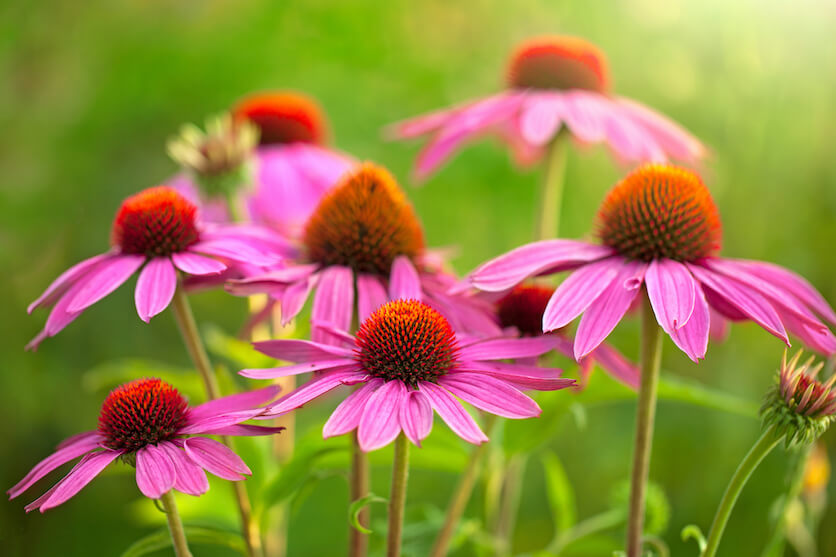
Echinacea tea will only be as beneficial as the ingredients it’s made from. The Cochrane Database of Systematic Reviews mentions that a large portion of commercial Echinacea products has not been clinically studied or tested.
These products are being marketed (labeled) with false/incorrect information and placed on store shelves. Caution should be exercised in where you purchase your herbal tea.
So, how do you know if an herbal product is safe or not when it comes to Echinacea tea? If in doubt, talk to your doctor.
What Is Echinacea Tea Good For?
Widespread claims among the traditional medicine community purport that Echinacea heads off oncoming colds and helps decrease the severity of the symptoms from a cold such as sore throat and headaches.
Does Echinacea Really Work?
Various studies report that Echinacea has little to no benefit, while numerous traditional medicine sources claim it does.
The Journal of American Medicine Association Network published a study (“Echinacea purpurea Therapy for the Treatment of the Common Cold“) that reports that researchers doing this study could not replicate Echinacea’s ability to reduce symptoms and duration of a cold. Further studies would have to be done to validate claims that this herb does what it does.
A study entitled “Echinacea for the prevention and treatment of upper respiratory tract infections: A systematic review and meta-analysis” concludes that Echinacea having any beneficial effect on upper respiratory tract infections is “debatable.” This conclusion is based on the lack of evidence in Echinacea shortening the length of the upper respiratory tract infection.
PubMed’s published research article (“Echinacea for treating the common cold: a randomized trial“) concluded Echinacea did not appear to be “statistically significant” with regard to the duration or severity of a cold. Furthermore, it goes on to state that the dosage used in the study would not “change the course of the common cold.”
Although our findings on the effectiveness of Echinacea seem disappointing, perhaps future studies will be able to uncover this herb’s benefits that hold true not only in the traditional medical community.
How To Make Echinacea Tea
Most Echinacea teas on the market come in the form of teabags and are relatively straightforward in brewing.
According to a leading Echinacea tea brand Traditional Medicinals, making a cup of tea is simple. They suggest the following steps to brewing your tea.
- Bring 8 ounces of water to a boil.
- Remove from the heat.
- Place 1 tea bag into a teacup.
- Pour the water into the teacup.
- Cover the teacup and allow the tea to steep for 10-15 minutes.
- Remove the tea bag and enjoy your tea.
Safe, Unsafe, or Just Plain Ole Bogus?
Tisanes (herbal teas) may come with risks if not consumed safely and under the recommendation of a healthcare provider. Just because the public says it’s a great way to chase a cold away doesn’t mean it’s safe. The decision to enjoy Echinacea tea comes down to a personal choice.
